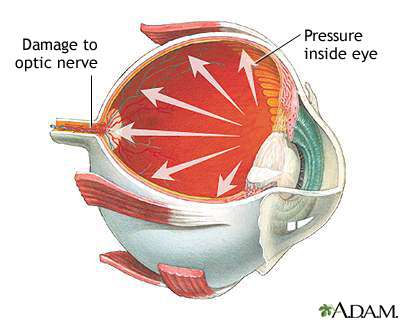Reputable Glaucoma Service Near Me: Protect Your Vision with Specialists
Reputable Glaucoma Service Near Me: Protect Your Vision with Specialists
Blog Article
Comprehending the Various Vision Modification Procedures Available for Clearer Sight
In the world of vision improvement treatments, a multitude of choices exist to attend to refractive errors and give people with clearer sight. From the commonly identified LASIK surgery to much less intrusive treatments like PRK and implantable lenses, the field of ophthalmology uses a series of strategies tailored to match various requirements and choices. Each treatment comes with its own collection of considerations, benefits, and possible threats. Understanding the nuances of these vision improvement methods is important for making notified decisions regarding one's visual health. Let's explore the details of these procedures and clarified the path to achieving improved vision clearness.
LASIK Surgical Procedure
LASIK surgery is a common refractive treatment utilized to deal with vision troubles such as astigmatism, farsightedness, and nearsightedness - glaucoma service near me. This medical technique, which means Laser-Assisted in Situ Keratomileusis, aims to reshape the cornea to improve how light is focused on the retina, ultimately improving vision quality. Throughout the procedure, a slim flap is developed on the cornea, and a laser is used to get rid of exact quantities of cells to improve it appropriately. This improving permits light to be accurately concentrated onto the retina, dealing with refractive errors.
One of the primary benefits of LASIK surgical treatment is the quick enhancement in vision experienced by people. In general, LASIK surgical procedure is a preferred choice for people seeking a long-lasting service for their vision issues.
PRK Procedure
While additionally a common refractive procedure, the PRK (Photorefractive Keratectomy) strategy differs from LASIK surgical treatment in its method to dealing with vision problems. In PRK, as opposed to developing a flap on the cornea, the external layer of the cornea, called the epithelium, is entirely gotten rid of. This allows the laser to improve the cornea to correct refractive mistakes such as farsightedness, astigmatism, and nearsightedness straight on the surface.

Despite the longer healing time, PRK can produce superb lead to vision enhancement, making it a useful option for those who may not be suitable prospects for LASIK surgery.
Implantable Lenses
Unlike PRK where the cornea is improved straight, implantable lenses supply an additional approach for correcting vision by inserting man-made lenses inside the eye. This procedure is especially valuable for people with high degrees of farsightedness, astigmatism, or nearsightedness who may not be suitable prospects for laser surgical treatments like LASIK or PRK.
Implantable lenses, also understood as phakic intraocular lenses, job by supplementing the eye's natural lens with a fabricated one. retina service near me. These lenses can be placed before the all-natural lens (anterior chamber) or behind the iris and in front of the all-natural lens (posterior chamber) By changing the power and positioning of these lenses, ophthalmologists can effectively deal with refractive mistakes and enhance visual acuity
One advantage of implantable lenses is that they are exchangeable and removable, giving adaptability for future changes. Nevertheless, just like any type of operation, there are dangers included, such as infection or cataract formation. Patients taking into consideration implantable lenses ought to speak with an eye care expert to establish the most suitable option based on their specific demands and eye health and wellness.
Corneal Rings
Corneal rings, also called intracorneal ring sectors, are tiny, clear gadgets put right into the cornea to remedy vision distortions such as keratoconus. Keratoconus is a condition where the cornea thins and bulges external, causing vision her explanation to come to be distorted. The insertion of corneal rings helps to squash the cornea, improving aesthetic acuity and minimizing the uneven astigmatism brought on by keratoconus.
The treatment for inserting corneal rings is relatively quick and minimally intrusive, commonly performed as an outpatient treatment. During the surgical treatment, the ophthalmologist makes a small laceration in the cornea and inserts the rings at a specific depth. Once in position, the rings assist to improve the cornea, offering a smoother surface for light to enter the eye, which can lead to more clear vision.
Corneal rings are thought about a relatively easy to fix treatment, as they can be removed or changed if essential. retina service near me. While they may site link not completely remove the demand for glasses or get in touch with lenses, corneal rings can considerably improve vision top quality and total aesthetic comfort for people with keratoconus or other corneal abnormalities
Refractive Lens Exchange
Following the adjustment of corneal irregularities with procedures like corneal rings, another vision improvement strategy that can attend to refractive errors is Refractive Lens Exchange (RLE) RLE is a procedure that involves replacing the eye's all-natural lens with a man-made intraocular lens (IOL) to deal with refractive mistakes such as farsightedness, presbyopia, and nearsightedness. This procedure is especially valuable for individuals that might not be suitable candidates for treatments like LASIK or PRK because of variables such as slim corneas or high refractive mistakes.

Conclusion
In final thought, there are different vision modification procedures readily available to assist people attain more clear sight. LASIK surgery, PRK treatment, implantable lenses, corneal rings, and refractive lens exchange are all choices that can resolve various vision concerns.
In the realm of vision adjustment treatments, a wide variety of options exist to resolve refractive errors and offer individuals with more clear sight.LASIK surgical treatment is a common refractive procedure used to fix vision issues such as nearsightedness, astigmatism, and farsightedness.While additionally a common refractive procedure, the PRK (Photorefractive Keratectomy) method varies from LASIK surgical treatment in its method to click this site correcting vision problems.Complying with the improvement of corneal irregularities with treatments like corneal rings, an additional vision correction technique that can deal with refractive errors is Refractive Lens Exchange (RLE) LASIK surgery, PRK treatment, implantable lenses, corneal rings, and refractive lens exchange are all choices that can resolve various vision concerns.
Report this page